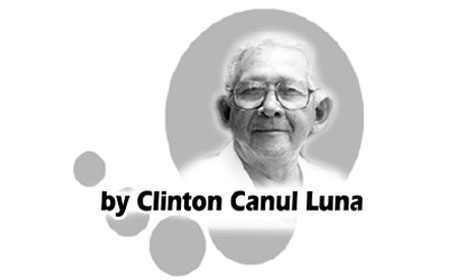In an article of mine published in the Amandala on Friday, September 24, 2021, entitled “Meaning of Caste”, under the subtitle “Examples of Caste Systems,” point #14 states:
“The castes in Latin America arose in the colonial period from the process of miscegenation among whites, coming from Europe; the Indians, settlers of the American territory; and the blacks, slaves brought from Africa.”
A further, in-depth explanation is found in the book entitled “The Black Middle: Africans, Mayas and Spaniards in Colonial Yucatan,” written by Matthew Restall, professor of Latin American History and Director of Latin American Studies at Pennsylvania State University. Since 1995, he has written or edited ten books, including The Maya World (Stanford, 1997). In this book, it mentions the casta “Pardo,” which is a mixture of an African with Maya, “Mulatto,” which is a mixture of Spanish with African, the “Mestizos”, who are a mixture of Spanish with Maya, and the “Castizo,” which is a mixture of Spanish with Mestiza. With the years, these castas mixed together, which reached a point at which the system did not know what casta to put them under. They started labeling them “Stay In The Air (Tente en el Aire)”, “I Don’t Understand You (No Te Entiendo)”, etc. The product from the blending of races lived in different parts of the Yucatan community. Those who were in the Maya villages disappeared and their offspring became the indigenous people of the land. Those who remained in the city and towns, among the Castizos (White Yucatecos) were called Mestizos in 1820 by the governor of Yucatan.
In 1821, Mexico got its independence, but before I continue with this point, I would like to go to the Anglo-Spanish treaty of 1783 which is known as the Treaty of Versailles. The book Una Tierra en Disputa; Belice ante la historia, written by Carlos A. Echánove Trujillo, states the following:
“Finally, on September 3 of that year 1783, the definitive peace treaty was signed, known as the Treaty of Versailles, whose article 6, relative to the point that interests us, reads as follows: ‘Article 6.- Being the intention of the two high contracting parties take precaution as far as possible all the motives of complaint and discord to which the logwood or Campeche has previously given occasion, having formed and scattered with this pretext many English establishments on the Spanish continent; expressly agreed that the subjects of His British Majesty shall have the power to cut, load and transport the dyewood in the district that includes the rivers of Valiz or Bellese and Rio Hondo, leaving the course of the said two rivers by indelible limits, so that its navigation is common to both nations, namely, the Valiz or Bellese river, from the sea rising to the front of a lake or dead arm, which enters the country and forms an isthmus or gargantuan with another similar arm that comes from towards Rio Nuevo or New River; so that the dividing line will cross the aforementioned isthmus straight and reach another side formed by the waters of Rio Nuevo or New River up to its current; And then the line will continue along the course of Rio Nuevo descending to the front of a stream whose origin indicates the map between Rio Nuevo and Rio Hondo, and will unload in Rio Hondo: which stream will also serve as a common limit until its union with Rio Hondo; and from there it will be the Rio Hondo descending to the sea, in the way that everything has been demarcated on the map that the plenipotentiaries of the two crowns have considered it convenient to use to fix the concrete points, so that good correspondence reigns between the two nations, and the English workers, cutters and laborers cannot go beyond because of the uncertainty of boundaries’ – Calderón Quijano, ob. cit.”
The 1783 Treaty of Versailles delineated territory that spanned 4,804 square kilometers which the British knew very well, and they knew exactly where the boundaries were.
[email protected]
September 26, 2021
Finca Solana
Corozal Town

